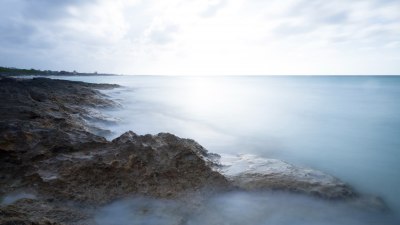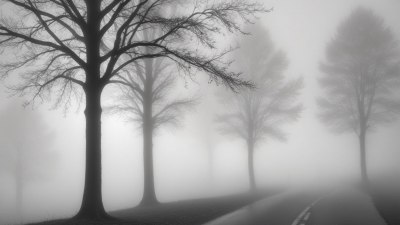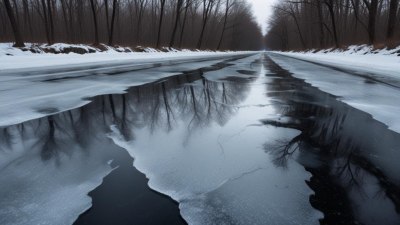Why That Outdoor Holiday Concert Always Feels 10 Degrees Colder Than Expected
Explore the reasons behind the surprising chill at outdoor holiday concerts and how to prepare.

This image was created with the assistance of Freepik
As the holiday season rolls around, outdoor concerts become a magical part of the festivities. However, as many attendees have discovered, these musical gatherings often feel significantly colder than the weather forecast suggests. This phenomenon can surprise even the most seasoned concertgoers. Why does this happen? In this article, we will delve into the various factors that contribute to this chilling feeling and provide some tips on how to enjoy your concert experience while staying warm.
The Impact of Wind Chill
One of the primary reasons outdoor holiday concerts can feel much colder is the wind chill factor. Wind chill refers to how cold it actually feels outside when the effects of wind are factored in with the temperature. For example, if the temperature is 40 degrees Fahrenheit and there is a wind blowing at 10 mph, the effective temperature can feel closer to 32 degrees. This difference can be quite uncomfortable, especially if you’re sitting still and enjoying a performance. The wind can cut through layers of clothing, making the experience feel significantly colder than anticipated.
Humidity Levels
Another factor to consider is the humidity levels in the atmosphere. Humidity affects how we perceive temperature; high humidity can make it feel warmer than it is, while low humidity can exacerbate the cold. During winter months, many outdoor concerts occur under low-humidity conditions, which can lead to a chilly environment, making it feel even colder. If the air is dry, moisture from our skin evaporates more quickly, which can increase sensations of cold. When attending a concert, it’s beneficial to check not just the temperature but also the humidity level predicted for that evening.
Clothing Choices
Your clothing choices can also play a substantial role in how cold you feel at a concert. Many concertgoers underestimate the importance of dressing appropriately for outdoor events, especially during the cold season. Many might opt for stylish attire over warmth, but layering is key. Wearing multiple layers of clothing can trap heat and provide insulation, whereas a single layer might not be sufficient. Consider thermal undergarments, insulated jackets, and accessories like hats, gloves, and scarves to keep the cold at bay. It’s better to be slightly overdressed and remove layers if necessary than to shiver through the concert.
Body Heat Dispersal
When attending an outdoor concert, especially one held in colder temperatures, your body heat can disperse quickly. This happens primarily because many concerts are held in large, open spaces where the crowd can be spread out. Unlike indoor venues where the warmth of the crowd can help to elevate temperatures, outdoor settings can lead to a quick loss of body heat into the cooler air around you. Standing or sitting without movement can lead to a greater sensation of cold, as less body heat is retained. Engaging in activities like dancing or moving about can help you stay warmer.
Duration of Exposure
The length of time you spend outdoors can contribute significantly to your overall comfort. At an outdoor concert, you may find yourself seated in the cold for several hours, which can lead to a greater sensation of chill than if you were only out for a short period. Our bodies lose heat over time, and prolonged exposure to outdoor elements can really amplify the cold sensation. This is especially true as the concert progresses and temperatures tend to drop further into the evening. Being mindful of this factor can help you prepare for the concert duration with better clothing and thermal strategies.
Psychological Factors
Interestingly, psychological factors can also influence how cold we feel. If you expect the concert to be cold based on previous experiences or weather reports, it may influence your perception. Additionally, the festive atmosphere typically associated with holiday concerts can lead us to focus on enjoyment rather than discomfort. However, if you find yourself shivering in the cold, your focus may shift quickly from enjoyment to discomfort, amplifying the sensation of cold. By preparing mentally and physically for the experience, you can enhance your enjoyment and mitigate feelings of chill.
Warm Drink Options
When it comes to enjoying outdoor holiday concerts, hot beverages can be a fantastic way to combat the cold. Many outdoor concerts feature food and beverage vendors selling hot drinks like coffee, cocoa, or mulled wine. Sipping on a warm drink can provide both a psychological and physical warmth, helping to ward off the effects of the cold. Not only does it provide a moment of comfort, but the steam and heat from the drink can warm you up internally, making the experience more enjoyable. Consider bringing a travel thermos filled with your favorite warm liquid to keep your spirits high during the performance.
Choosing the Right Concert Location
Location plays a vital role in how cold a concert feels. Whether the venue is in an open field, a park, or a closed space can significantly affect the temperature. Open fields can leave you exposed to the wind without any protection, while venues with structures may provide more shelter from drafty winds. Before you decide which concert to attend, consider where it’s being held and how that setting might influence your overall comfort. Venues that are surrounded by natural windbreaks, such as trees or buildings, can often feel warmer than those that are wide open.
Arriving Early vs. Late
The time you arrive at the concert can also impact your experience. Arriving too early might leave you exposed to cold temperatures as you wait for the event to start. Conversely, arriving late can cause you to miss out on the opening acts while being weary from rushing. Consider the schedule and arrive at a comfortable time that allows you to settle in without being too cold. If you get to the venue early, seek out areas with some shelter or warmth, such as nearby cafes or sheltered spots, so you can minimize your exposure prior to the concert.
Tips for Staying Warm
Finding ways to stay warm during outdoor concerts will enhance your experience. Here are some practical tips to keep you comfortable: Wear multiple layers of clothing; thermal or wool clothing can trap heat effectively. Bring a warm blanket to wrap around yourself during the show. Use hand and foot warmers to add extra warmth to your extremities. Opt for insulated footwear to keep your feet warm while standing or dancing. Position yourself near sources of heat (like campfires or heaters, if available) and make sure to keep moving to generate body heat. Lastly, staying hydrated helps your body regulate temperature better, so drink plenty of water, even in cold weather.
In conclusion, the chilly sensation at outdoor holiday concerts can result from several factors, including wind chill, humidity, body heat dispersal, exposure duration, clothing choices, and even psychological aspects. Understanding these factors can help you prepare accordingly and make the most of your outdoor concert experience. By dressing warmly, being aware of your environment, and engaging in activities to keep your blood flowing, you can enjoy the festivities while staying comfortably warm. Embrace the magical atmosphere of outdoor holiday concerts, and remember that with the right preparations, you can have a wonderful time despite the cold!











